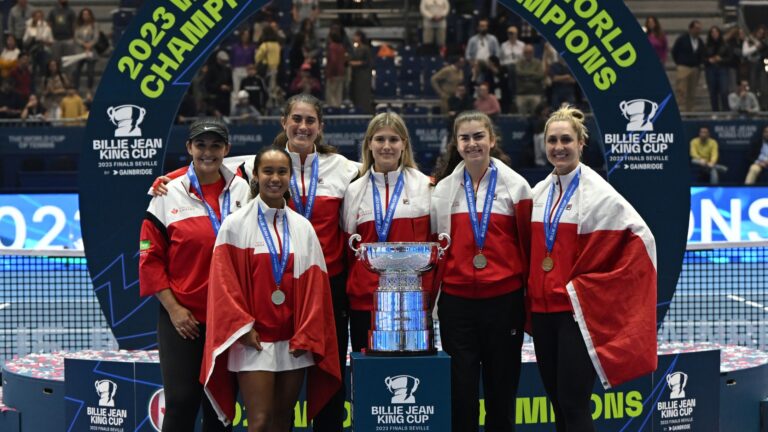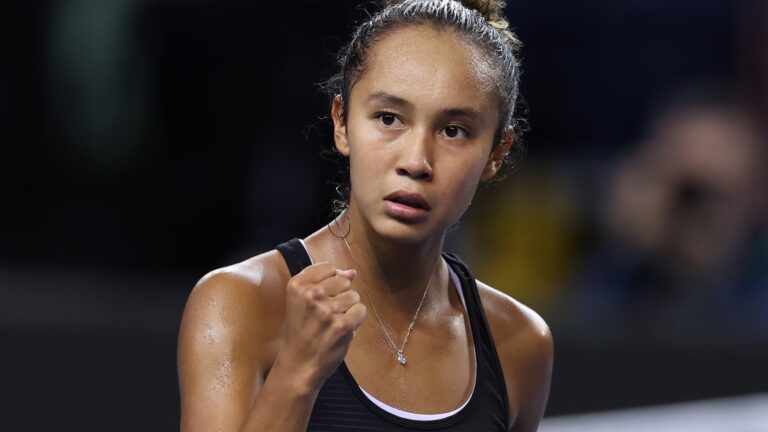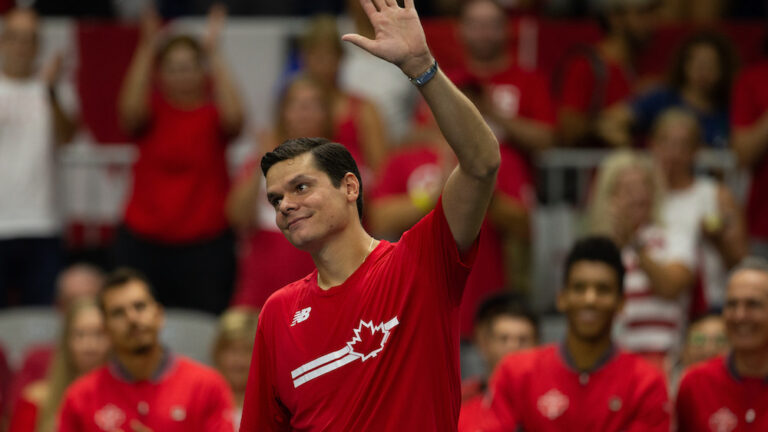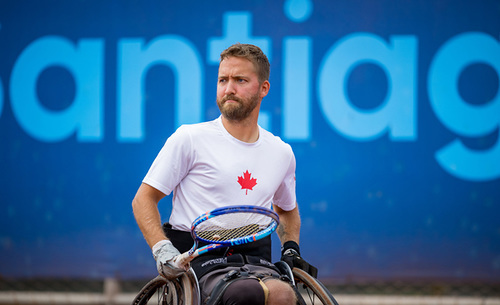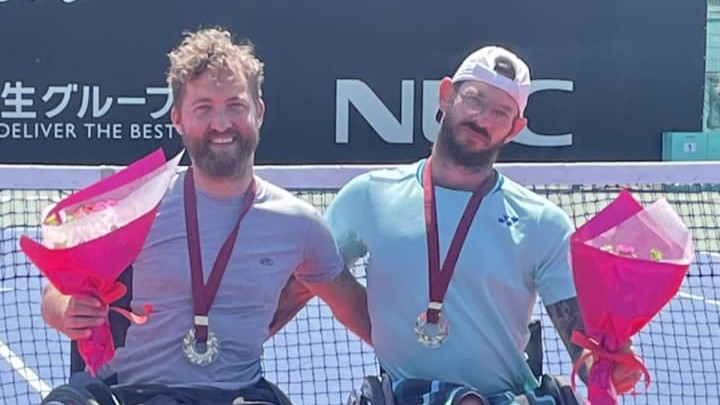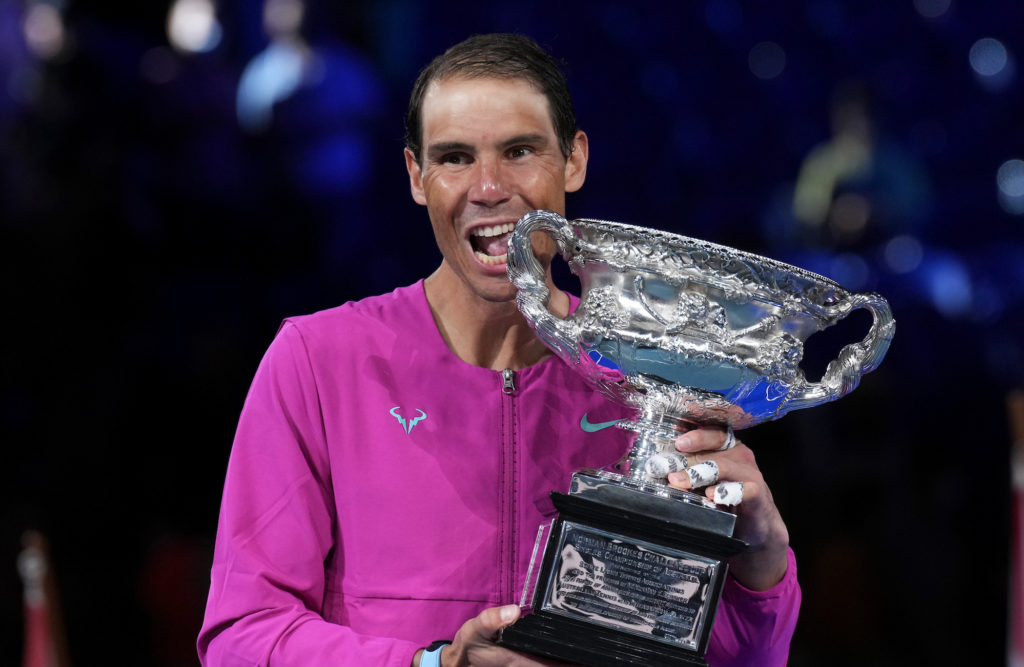
Photo : Martin Sidorjak
Most Grand Slam titles in men’s singles tennis: it’s a record Roger Federer held for 12 and a half years, until he was forced to share it with Rafael Nadal beginning in June 2020 and with Novak Djokovic the following year.
On January 30, against virtually all odds, the stalemate broke when the King of Clay locked down the 21st major of his career in Melbourne.
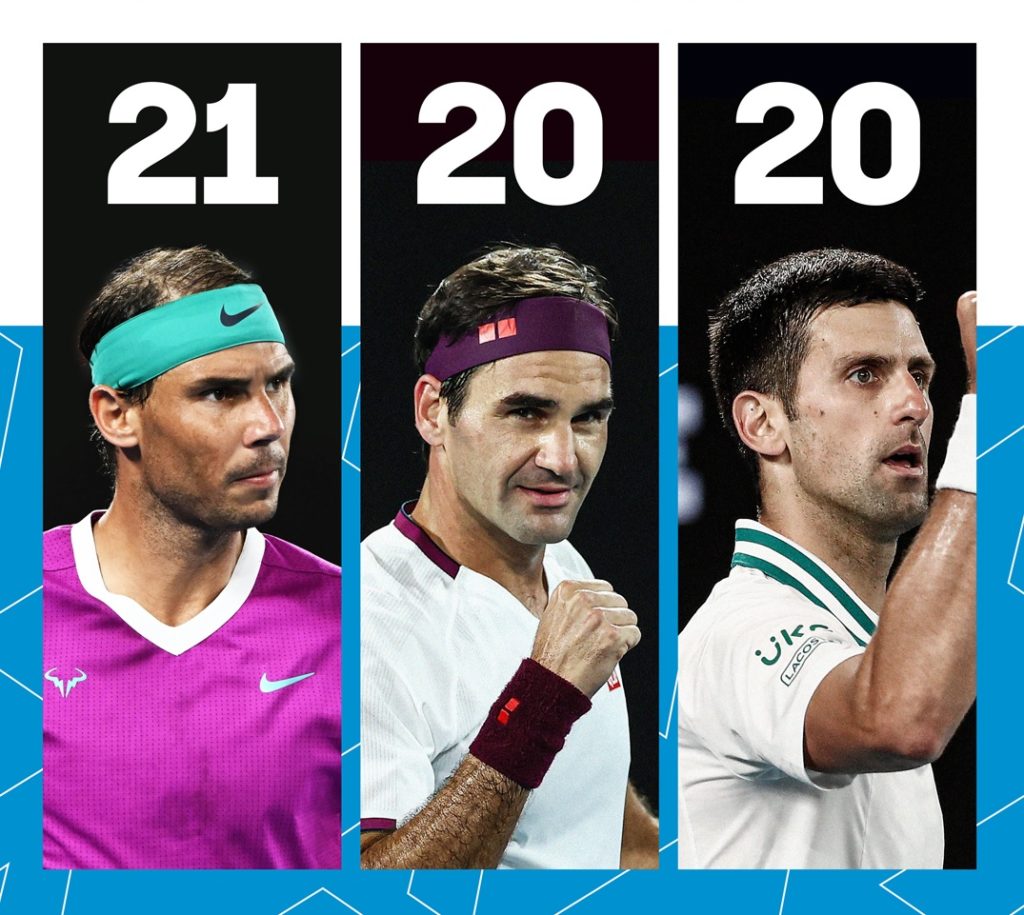
Most Grand Slam titles in men’s singles tennis: it’s a record Roger Federer held for 12 and a half years, until he was forced to share it with Rafael Nadal beginning in June 2020 and with Novak Djokovic the following year.
On January 30, against virtually all odds, the stalemate broke when the King of Clay locked down the 21st major of his career in Melbourne.
And by virtually all odds, I’m referring to the fact that Nadal had started talking to his family and team about retirement just a few weeks ago, after a six-month hiatus due to a foot injury that’s dogged him for years. The hill was getting more and more challenging to climb.
Still, playing like his life depended on it, the aging and grimacing Rafa we saw on the courts of late wasn’t ready to thrown in the towel just yet.
Drawing on every last resource and reserve, he did the unthinkable. Without setting foot on a competitive court between August 5, 2021, in Washington and January 5, 2022, at the Melbourne Summer Set, he still managed to win the lead-in event and first major of the season. Eleven straight matches.
An epic win by an exceptional athlete.

It’s not every day that a new Grand Slam leader is crowned.
That’s especially true on the women’s side: Margaret Court has kept a grip on the record since September 1970, when she won her 20th and moved ahead of Helen Willis.
It remains open for debate whether her 24 Slams should stand considering the seven AO crowns she won at a time when just about only Australians competed in the event.
In any case, on the men’s side, there’s been relative stability for the past 55 years. Only four players have held the lead.
| Player | Titles | Period |
| Roy Emerson (AUS) | 12 | 33 years, 1 month (1967 to 2000) |
| Pete Sampras (USA) | 14 | 9 years (2000 to 2009) |
| Roger Federer (SUI) | 20 | 12 years, 6 months (2009 to 2022) |
| Rafael Nadal (ESP) | 21 | 2022 to? |
How long can the 35-year-old stay on top, especially with Novak Djokovic, who’s a year younger, breathing down his neck?
And Federer? Considering his long absences, bad knees and age, he’ll need a major miracle to get to 21.
I’ll wrap things up with one of the best tweets I came across in the minutes following Rafa’s triumph on Sunday: the Djoker and the Maestro having a moment.
Speaking of those two, they took to social to congratulate the new record holder. Novak broke his nearly three-week silence with a Twitter tribute, and Roger posted something a little more heartfelt on Insta.
Lady Ashleigh

Déjà qu’on l’aimait beaucoup.
We already liked her a lot.
She has, in my opinion, already replaced Serena as the face of the WTA.
She was already a sports icon in her native Australia.
And on January 29, Ashleigh Barty cemented her place in tennis when she won the AO in Melbourne, becoming the first Australian to win on home soil in 44 years.
It’s an achievement her distinguished fellow Aussies, including US Open champion Sam Stosur and two-time Grand Slam winners Lleyton Hewitt and Patrick Rafter, never managed to pull off.
But Ash pulled it off with style. As her rival Danielle Collins served for the second set at 5-1, Barty orchestrated a spectacular comeback to win in the tiebreaker (6-3, 7-6).
Let’s not forget that she was returning from four months off. Since her first match back on January 5, she’s won 11 straight: the lead-in Adelaide International and the Slam.
The World No.1 secured her third Grand Slam crown in less than two and a half years and a 2,600-point lead in the rankings.
She’s certainly at the very top of her game. And the world.

Only four cities get to host tennis’ most prestigious events and therefore players from only four countries can gift their fellow citizens with a Slam. In an individual sport like tennis in which tournaments very rarely relocate, a win by a hometown hero is all the more extraordinary.
Back in 2013, the Brits felt the same thrill as Andy Murray ended an even longer dry spell and raised the Wimbledon Cup. He was the first Scotsman in 77 years to dominate the hallowed grass courts.
The title, along with his second Wimbledon, US Open crown and two Olympic medals, earned Sir Andy a knighthood.
If Ashleigh Barty had been born in Ipswich, England, instead of Ipswich, Queensland, Australia, would she be Dame Ash?
I personally like Lady Ashleigh for such a distinguished and outstanding player who’s made Australian sports history.

Recap: AO picks and predictions

Call them what you like: sports picks, AO predictions….
Fans and pros alike always enjoy the excitement (or pressure) of picking winners. Sometimes money is in play, and sometimes it’s just for bragging rights.
Some outcomes are easier to predict than others, especially when events have only two competitors. When it comes to a golf tournament with 144 players or a Grand Slam with 128, it takes some knowledge and a bit of luck to get it right.
But like I said, it’s all in good fun.
Tennis Canada called upon eight experts to make their AO picks. The task was amusing and tough, in equal measure. Some fared better than others, particularly when it came to the dark horses and Cinderella stories.
First, I must congratulate my distinguished colleagues who were right on target with their picks for the women’s and men’s singles champions. Carolyn Cameron (Sportsnet), Mark McMasters (TSN) and Mike McIntyre (Match Point Canada podcast) relied on logic with Ashleigh Barty and legend (or nostalgia) with Rafael Nadal. Some of us, myself included, preferred to stay in the spirit of the times with Medvedev and Osaka or tried the element of surprise with Sabalenka and Kontaveit.
But to no avail.
Here’s what we came up with.

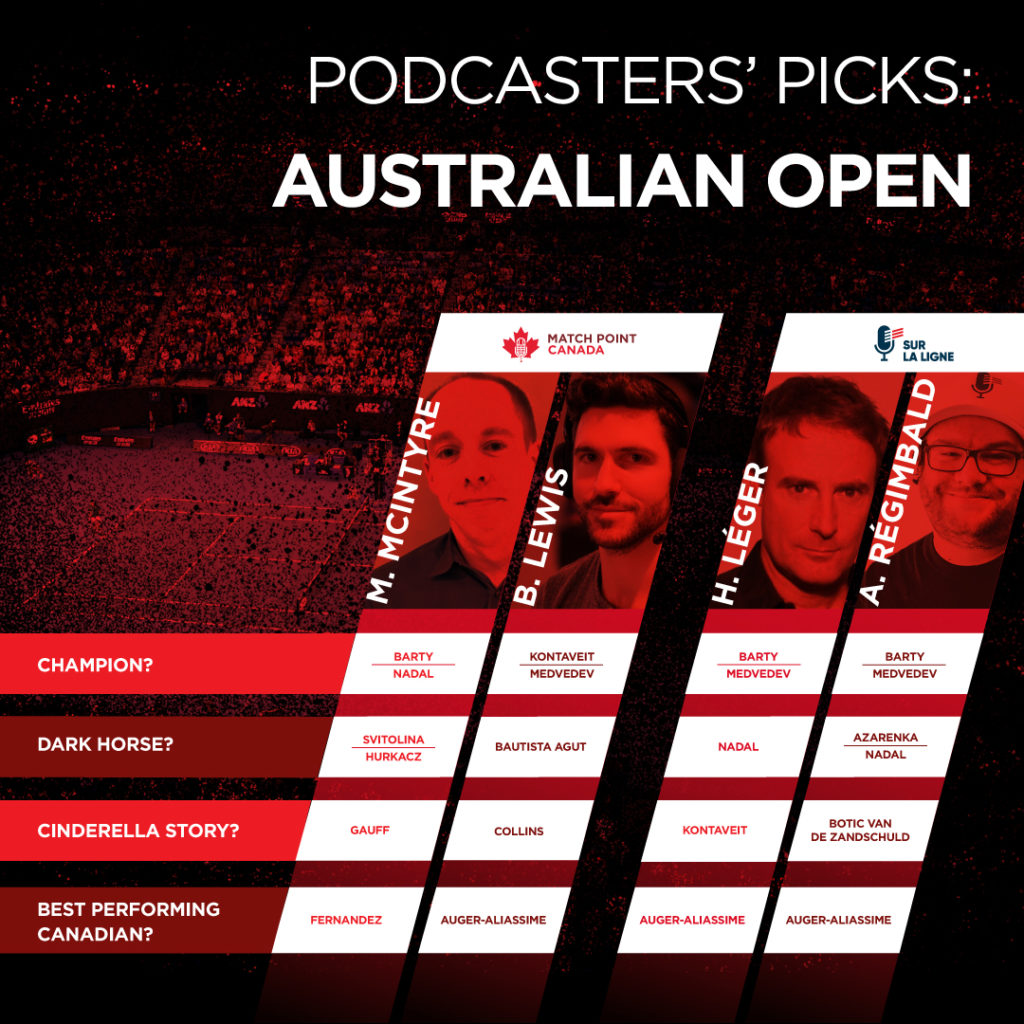
Now, a few thoughts on the other categories.
The majority thought Félix Auger-Aliassime would go the furthest out of all the Canadians in the mix. He did, and Denis Shapovalov went with him all the way to the quarters.
As far as the dark horses and Cinderellas, there were some interesting picks.
Of course, there are always a lot more sleepers than favourites and, as expected, not many predictions panned out.
Still, there are two very honourable mentions.
Ben Lewis of Match Point Canada was right about Danielle Collins, who battled her way to the very end.
Indeed, the 28-year-old finalist, who only entered the Top 50 in April 2018 and whose highest ranking had been No.23 on January 27, 2019, played the tournament of her life until she ran into World No.1 Ashleigh Barty.
If you’d like to get to know the intriguing Danielle Collins, I suggest this very interesting read by journalist Lili Anolik in Racquet.
As far as the dark horses, Hugues Léger was right about Rafa. Between you and me, with Novak Djokovic potentially winning his 10th AO or Daniil Medvedev hypothetically building on his momentum from late 2021, few would have picked the King of Clay coming off a five-month absence.
As far as the Cinderella story, it could be Ashleigh Barty, who won her very first home Slam—something no Australian had done since Chris O’Neil in 1978.
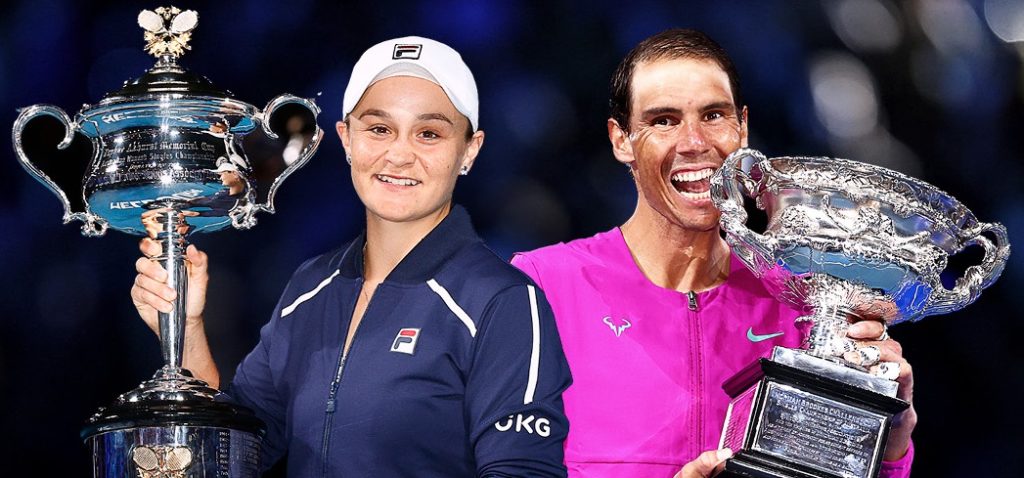
The tradition continues
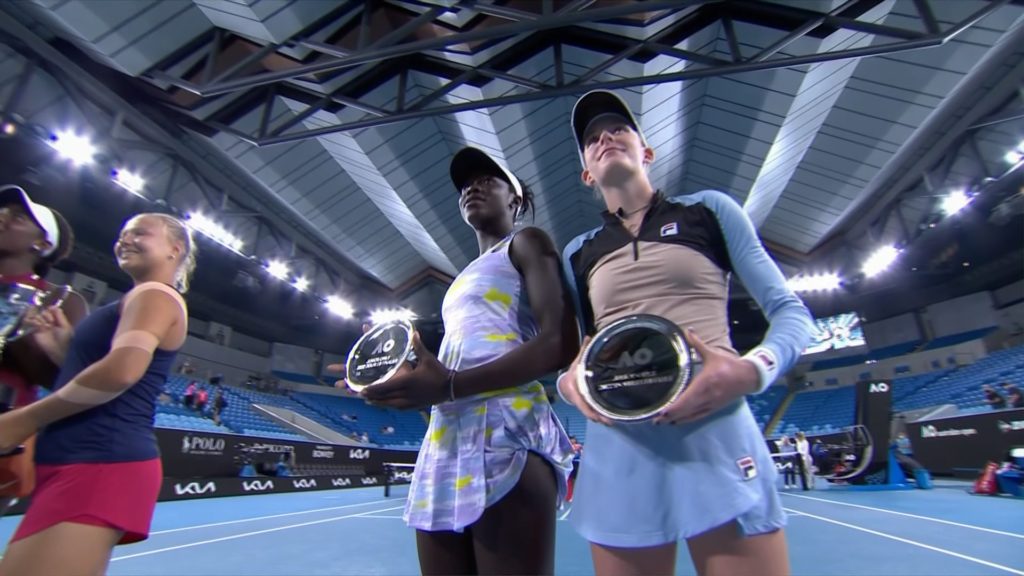
Victoria and Kayla!
In what has become a tradition in Canadian junior tennis, Victoria Mboko and Kayla Cross earned a spot in a Grand Slam final. They may not have won, but there’s still every reason to celebrate such an amazing achievement by two of our up-and-comers.
In the past decade, the teens have seen great homegrown duos win big: Bianca Andreescu and Carson Branstine and Shapovalov and Auger-Aliassime, players like Eugenie Bouchard, Carol Zhao and Leylah Fernandez who’ve teamed up with partners from around the world, as well as Lareau and LeBlanc, Greg Rusedski, Jocelyn Robichaud and Frank Dancevic.
Last week, in their very impressive run to the final, Kayla and Victoria took that first step from childhood dream to world-class competition.
Read all about it here.
The future’s looking very bright!
One racquet, six wheels, a tonne of trophies
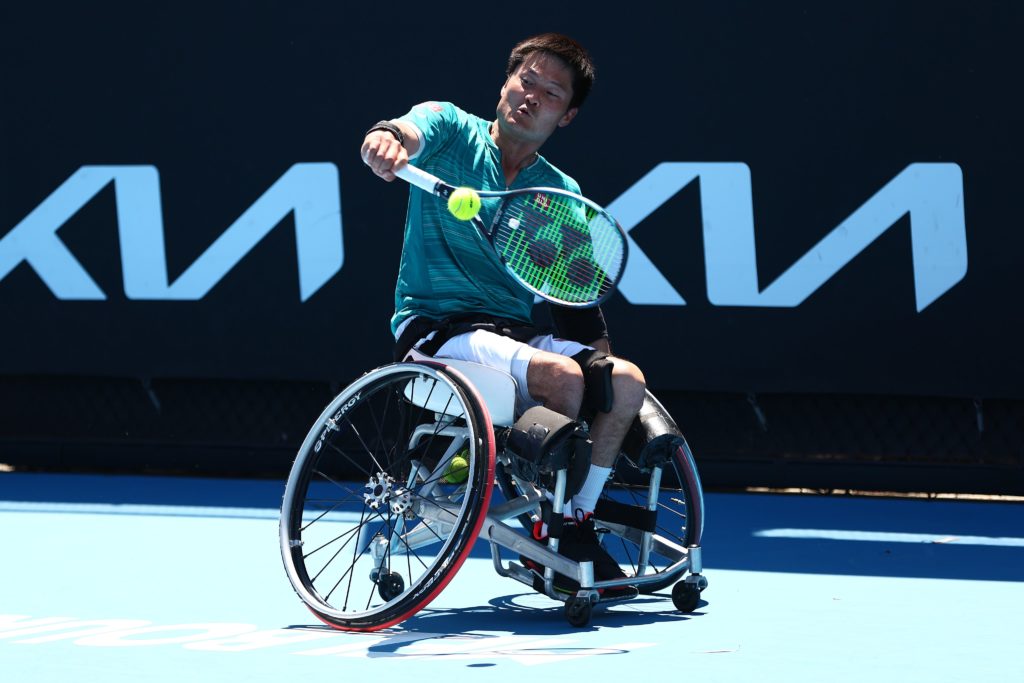
While there’s been some shuffling at the top of the list of players with the most Slam titles in men’s singles tennis, men’s wheelchair tennis has its emperor.
His name is Shingo Kuneida, and he’s just added an 11th Australian title to his record.
Yes, you read that right. Not an 11th Slam—an 11th Slam in Melbourne!
That makes 26 Grand Slam winner’s trophies for Kuneida in singles. His doubles triumphs bring his career total to 47!
At his first AO in 2007, Kuneida embarked on a winning streak and brought five consecutive titles home to Japan. In nine years, he’s won the event eight times.
He completed a calendar Slam in 2014 and was crowned 2008, 2012 and 2020 Paralympic champion.
With such a mindboggling record, he is the undisputed GOAT.
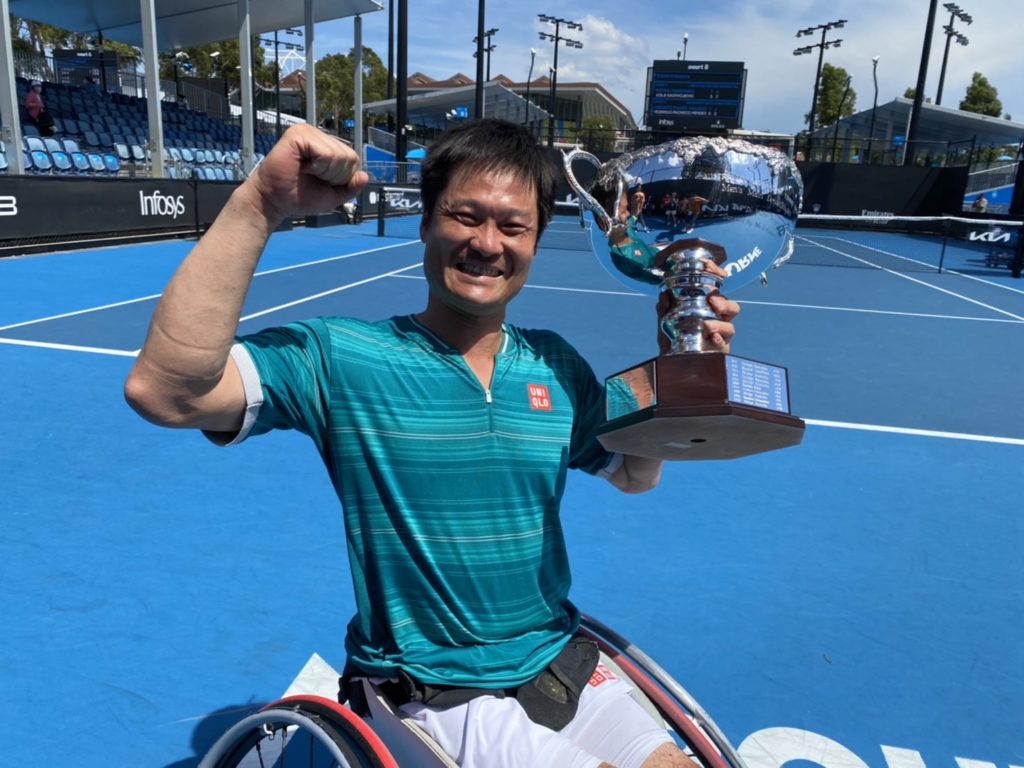
Victory for Vasek
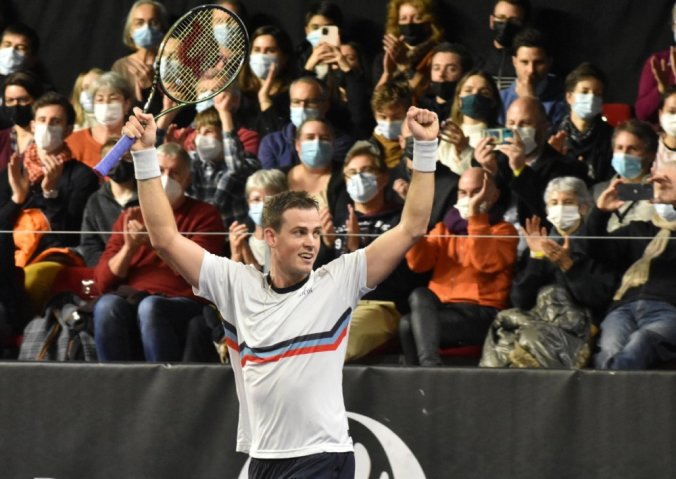
Far from Melbourne’s media spotlight, a Canadian veteran fought in one of the rare tournaments held during the major and WON!
At the Open Quimper Bretagne Occidentale in France, World No.128 Vasek Pospisil defeated No.167 Grégoire Barrère of France (6-4, 3-6, 6-1).
Catch all the highlights right here.
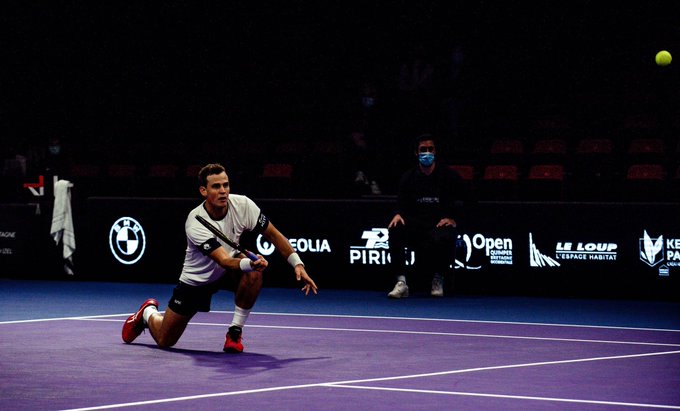
The win marks Pospisil’s first title in 35 tournaments or two and a half years. He raised his previous winner’s trophies in Las Vegas and Charlottesville in October and November 2019.
The win in Quimper is his 10th career Challenger title.
The 31-year-old British Columbian has started the season off right with a 9–2 record at three tournaments. In the rankings, he’s moved up 17 to No.121.
That puts him just three spots from No.118 Milos Raonic, who hasn’t given any signs of a possible return to tennis. In 2021, the Ontarian played only ten matches at five tournaments (6–4). A heel injury kept him away from Australia, and he fell out of the Top 100 for the first time since 2011.
Email: privard@tenniscanada.com
Twitter: @paul6rivard
Follow all our Canadians in action here.
